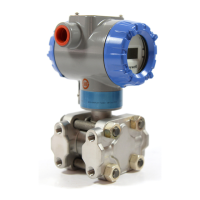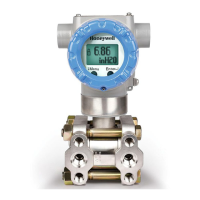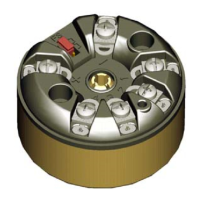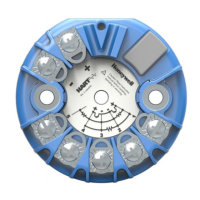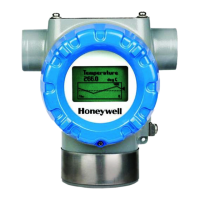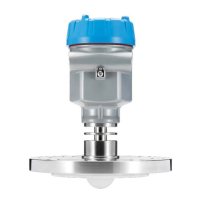Page 16 ST 800 SmartLine Pressure Transmitters User’s Manual Revision 10
Table 5 – Remote Diaphragm Mounting Details
Connect the Remote Seal on ….
Transmitter High Pressure (HP)
Side to tank wall lower flange
mounting.
Transmitter Low Pressure (LP) side to tank wall
upper flange.
Transmitter Low Pressure (LP)
Side to tank wall lower flange
mounting.
Transmitter Low Pressure (LP) side to tank wall
upper flange. OR
High Pressure (HP) side to tank wall upper flange
3.5 Piping the ST 800 Transmitter
3.5.1 Piping Arrangements
Piping arrangements vary depending upon process measurement requirements and the Transmitter
model. For example, a differential pressure transmitter comes with double-ended process heads with
¼-inch NPT connections, which can be modified to accept ½-inch NPT through optional flange
adapters. Gauge pressure transmitters are available with various connections for direct mounting to a
process pipe.
A ½-inch, schedule 80, steel pipe is commonly used for Transmitter integration into a process system.
Many piping arrangements use a three-valve manifold to connect the process piping to the
Transmitter. A manifold makes it easy to install and remove or re-zero a Transmitter without
interrupting the process. A manifold also accommodates the installation of blow-down valves to clear
debris from pressure lines. Figure 12 represents a typical piping arrangement using a three-valve
manifold and blow-down lines for a differential pressure transmitter being used to measure flow.
Figure 12 – Typical 3-Valve Manifold with Blow-Down Piping
Blow-Down
Valve
3-Valve
Manifold
To Upstream TapTo Downst ream Tap
To Low Pressure
Side of Transmit ter
To High Pressure
Side of Transmit ter
Blow-Down
Valve
Blow-Down
Piping
To W asteTo W aste
Blow-Down
Piping
21010

